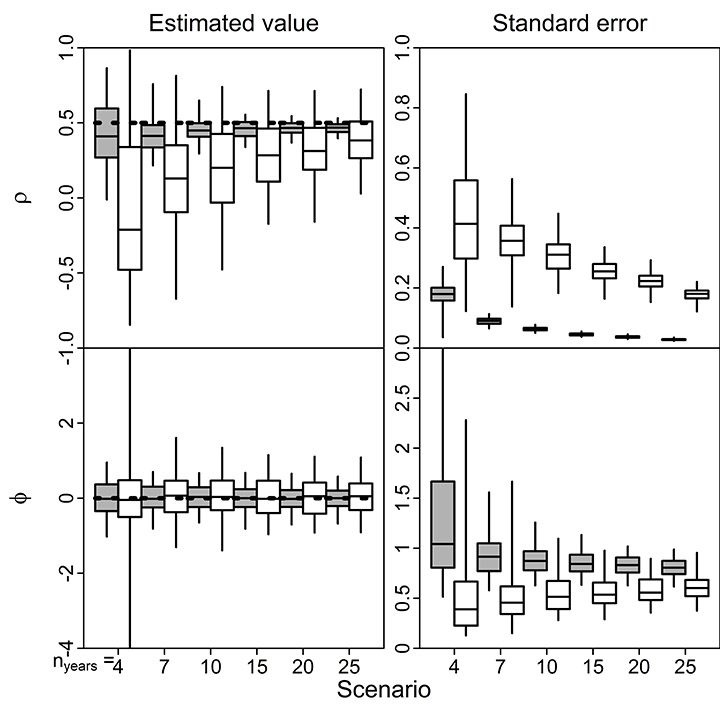Ecological Archives E096-108-A4
James T. Thorson, Hans J. Skaug, Kasper Kristensen, Andrew O. Shelton, Eric J. Ward, John H. Harms, and James A. Benante. 2015. The importance of spatial models for estimating the strength of density dependence. Ecology 96:1202–1212. http://dx.doi.org/10.1890/14-0739.1
Appendix D. Power analysis when varying the number of stations sampled per year.
We here describe a power analysis that explores the impact of varying the the number of stations that are sampled every year (where all other parameters are identical to Scenario 1 described in the main text):
This power analysis (Fig. D1) demonstrates that both spatial and nonspatial models have degraded performance given decreases in sample size per year. In particular, the standard error for estimates of density dependence ρ from both spatial and nonspatial models decreases with increasing sample sizes, although the standard error and bias is lower for the spatial model in all sample sizes explored here. Paradoxically, the standard error for the estimated ratio of initial and equilibrium densities ![]() increases with increased sample size for the spatial model. Exploratory analysis suggests that this arises because increasing sample sizes decrease standard errors for the variance of annual variation in production σE², and this decreased standard error causes parameter uncertainty to be attributed increasingly to the parameter
increases with increased sample size for the spatial model. Exploratory analysis suggests that this arises because increasing sample sizes decrease standard errors for the variance of annual variation in production σE², and this decreased standard error causes parameter uncertainty to be attributed increasingly to the parameter ![]() .
.

Fig. D1. Results from simulated power analysis, involving Scenarios A–D (A: 25 samples per year; B: 50 samples per year; C: 100 samples per year; D: 200 samples per year), see Fig. 3 caption for details.